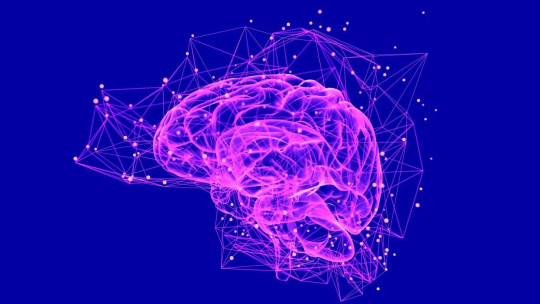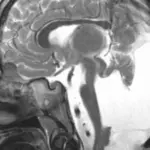
Cerebellar or cerebellar ataxia is a set of symptoms related to the coordination of movements, balance and posture that occurs as a result of injuries and inflammations in the cerebellum. In this article we will describe the symptoms, causes and The main treatments for cerebellar ataxia.
What is cerebellar ataxia?
The term “ataxia” is used to refer to a syndrome characterized by symptoms such as lack of balance and coordination motorboat. When these alterations are due to dysfunctions in the cerebellum, the posterior structure of the brain, the concept of “cerebellar ataxia” or “cerebellar” is used.
Although until a few years ago it was believed that the cerebellum participated mainly in functions related to the coordination of movement, it is now known that it also plays a relevant role in language, cognition and emotion.
Because of this multiplicity of tasks, lesions and inflammations in the cerebellum not only cause ataxia but also other disparate symptoms that are associated with the processes and functions that we have mentioned.
There are two main types of cerebellar ataxia: acute and chronic. We speak of “acute cerebellar ataxia” when the symptoms appear suddenly, and we say that it is chronic when they develop progressively.
Acute cerebellar ataxia is more common than chronic cerebellar ataxia. It is common for it to appear in babies and young children in the period following an illness. Chronic cerebellar ataxia is usually related to structural neurological alterations, such as those caused by trauma, tumors and autoimmune diseases.
Characteristic symptoms and signs
The main symptoms of cerebellar ataxia They are related to the coordination of movements of different parts of the body, since these types of signs are what define ataxia. However, the most common thing is that other alterations associated with damage to the cerebellum also appear.
Scientific research has determined that these symptoms and signs occur on the ipsilateral side of the body, that is, in the same hemisphere in which the lesion in the cerebellum is located.
Causes of this alteration
The cerebellum or any other part of the nervous system can suffer damage and inflammation for many different reasons; Therefore, the reasons for the appearance of cerebellar ataxia are also very numerous.
Below we will describe some of the most common.
1. Genetic inheritance
There are different forms of ataxia caused by inheritance of genetic defects that alter protein synthesis necessary for the normal functioning of the nervous system, and which mainly affect the cerebellum and the spinal cord.
Spinocerebellar and episodic ataxias are inherited through an autosomal dominant mechanism, while Wilson’s disease, Friedrich’s ataxia, ataxia-telangiectasia, and congenital cerebellar ataxia are transmitted by autosomal recessive inheritance.
2. Craniocerebral trauma
One of the most common causes of cerebellar ataxia is head trauma ; For example, it is common for the cerebellum to be damaged as a result of traffic accidents, when the back of the skull hits the seat.
3. Strokes
Strokes, like ischemia, can alter circulatory flow to the cerebellum and other regions; If the tissue is deprived of nutrients and oxygen it can become necrotic, which causes damage to the affected area.
4. Infectious diseases
Chickenpox, Lyme disease, and other infectious diseases They are common causes of this syndrome, especially in young children. It usually appears during the recovery period and usually only lasts a few weeks.
5. Autoimmune diseases
Among the autoimmune diseases that can cause symptoms of cerebellar ataxia, multiple sclerosis and sarcoidosis stand out.
6. Brain tumors
The appearance of tumors near the cerebellum frequently causes damage to this structure, even if they are benign tumors. Likewise, paraneoplastic syndromes, caused by pathological responses of the immune system to the development of cancer, have also been associated with cerebellar ataxia.
7. Exposure and substance use
Exposure to elements toxic to the human body such as lead and mercury can cause symptoms of cerebellar ataxia; The same thing happens with chemotherapy. Abusive consumption of alcohol or some types of anxiolytics especially barbiturates and benzodiazepines, can cause harmful reactions in the cerebellum and the rest of the nervous system.
Treatment of cerebellar ataxia
Given that cerebellar ataxia can appear as a result of a large number of causes, the most appropriate treatment for each case will depend on the specific alteration that caused the symptoms. This multiplicity of causal factors makes identification of the underlying problem particularly important in ataxia.
Acute cerebellar ataxias tend to disappear progressively in a matter of weeks; Conversely, and by definition, chronic ataxia is more difficult to treat and may have to be managed solely through supportive therapy.
Rehabilitation can be effective in reducing problems related to posture and motor skills. Therapeutic programs focused on exercises that work on coordination and balance are applied with some frequency.
Buspirone, an anxiolytic from the azapirone group, has been shown to be useful in the treatment of mild and moderate symptoms of cerebellar ataxia, although it is not so useful in more severe cases. Its effects are associated with increased serotonin levels in the cerebellum.
In recent years, research has begun on the therapeutic efficacy of transcranial stimulation of the cerebellar cortex in order to enhance its inhibitory activity on movements. The results so far are encouraging but more research is required to consolidate these interventions in cases of cerebellar ataxia.








